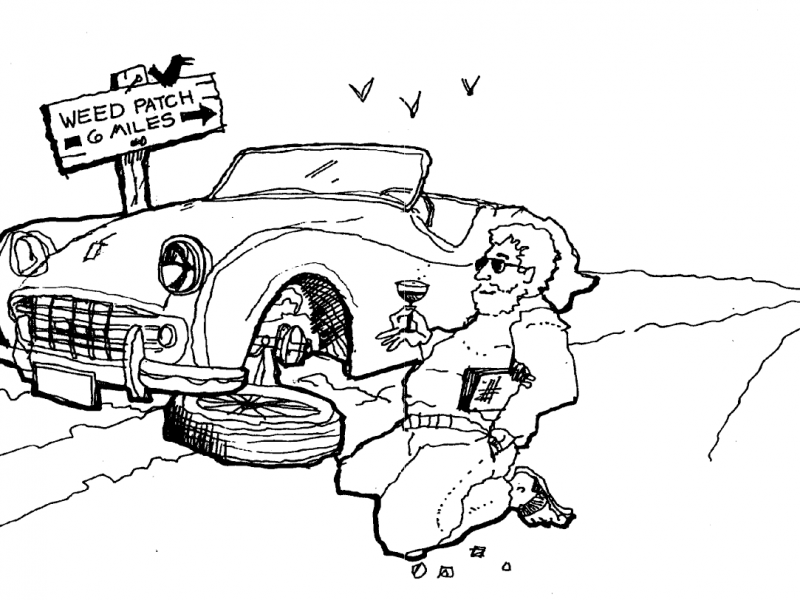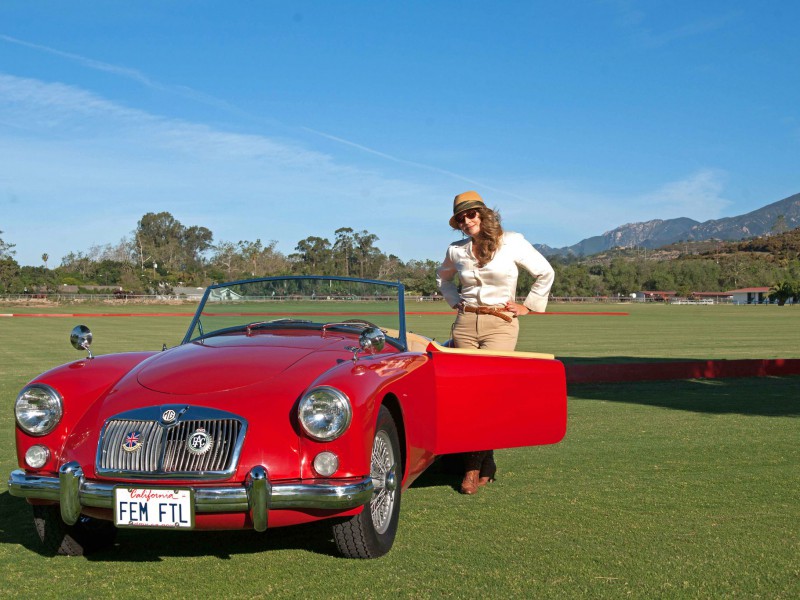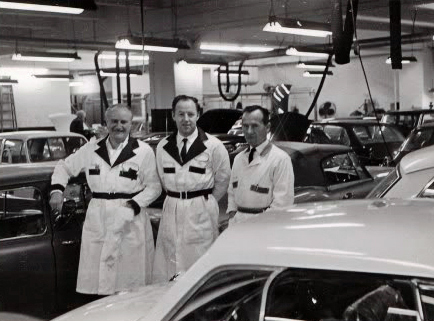The Keys to Your First Classic
By Karan Bhatia, member of the Southern California Triumph Owners Association
The desire to own a classic car was growing and it finally felt the time was right to begin my search. My dad, a life-long automobile lover, has owned and maintained a variety of his own British cars and “me mum,” as the British would say, grew up in Coventry, a city in which much of England’s automobile history is rooted. It felt right to purchase a classic British car. Practicality has always been a priority to me, so I sold my perfectly reliable, low mileage Honda, started using my motorcycle as my primary means of transportation and began searching for an old project car to begin fixing up, with absolutely no knowledge of how to do so!
I wanted a complete basket case of a car. I had grand plans of a frame-off restoration, as this is obviously the most logical thing to do for someone who had done a total of zero oil changes and didn’t even own a single socket. I own a 2016 motorcycle and it runs so perfectly that it never needs any work. I wanted to work! My dad reasoned with me and although I silently felt he was killing the fun, he talked me into finding something that was at least drivable, by a safe standard.

The search didn’t last long. I found a Triumph Spitfire for sale locally. I rushed my dad over to see it, since he has far more experience than myself when it comes to British cars, although, to be fair, even a rusty lug nut has more experience with British cars than myself. This was probably the five hundredth British car I’d seen for sale but the first that seemed worthy of checking out in person. You can imagine my disappointment when we pulled up to the owner’s home, only to find a beautifully painted car with an engine that had recently been rebuilt and was running excellently. How do you call this a project?! It looks fantastic, I can drive it home and it shifts and brakes perfectly! Then the owner opened his garage and said he’d happily give us the 10 or so large boxes of parts he had that had yet to be installed, as most of the detail work remained to be done on the car. A shimmer of hope. I was sold, even though I felt like the car was going to be effortless to own and my plans had been far more ambitious. The last thing he handed me was a dusty copy of the Haynes manual. I mindlessly placed it in one of the many boxes. Little did I know that would turn out to be the most useful thing he gave me.
The car is home. I’m eager to work on it, but that’s a bit difficult when I really don’t know how to do anything. Start with cleaning it, I guess? I know how to wash a car. After the first wash the turn signals stopped working and the hazards wouldn’t stop working. I was permanently hazardous! The first thing I learned since owning my British car: It appears I don’t know how to wash a car. And so began the journey of owning, but most importantly, learning.
Each day, I became a bit more adventurous in my endeavors. I began attending car shows and joined a local Triumph club. The British car community is incredibly welcoming and helpful. I noticed everyone had immaculate engine bays. I started buying tools and taking things apart that looked dirty. My skill set didn’t extend beyond cleaning (I soon found out I knew nothing about cleaning either, as I was clueless when it came to degreasing, detailing, washing and more). The engine bay was atrocious, so that became my first actual “project.” The engine had been rebuilt, but everything around it was covered in the thickest layer of grease I’ve ever seen (although initially I thought it was just painted black, as it never occurred to me an engine could have that much perfectly caked grease on it). As I began degreasing, after learning what degreaser was, I discovered worn out metal parts, like windshield wiper motors and that dreaded PDWA, even though I had no clue what the parts were. I began removing parts and restoring them, with the help of my new friend, the Haynes manual. I would figure out what a part’s function was, determine whether or not it was functional and then do everything I could to make it work right and shine at the same time. I was eager to turn wrenches, so parts came off hastily and went back on after being cleaned and restored, with much swearing, sweating, screaming and sandpaper. Each small project gave me a bit more confidence to tackle slightly larger projects. Catalytic converter blocked up? Easy replacement on the driveway. Firewall has dents and shabby paint? No problem. Armed with my manual and the help of YouTube, online forums and fellow British car owners, I have been furiously attacking this car, learning how to do basic body work, restore a variety of parts and materials, tune carbs, adjust timing, install a soft top, fuss with a sticker to go on my heater control knob and so much more. Who knew how exciting a rivet gun could be! And while it’s true that I often did more damage during the first attempt fixing something, the persistence of reattempting things multiple times before being satisfied is a powerful teacher. I’ve found the key to success is lots of swearing, sweating and screaming. Oh, and sandpaper.

As I spent more time working on the car, I truly began to appreciate my dad’s advice. Thank goodness I didn’t buy a complete basket case of a car. This car looked to be 100% complete to my untrained eye when we first went to look at it, and the more time I spend working on it, the more I realize how much work this car requires, at least for someone who began this venture with no knowledge of where to start. There will probably always be something that needs tinkering with and I’m thrilled about that, as all I wanted was to learn about maintaining a classic car. I used to laugh when I read that people spent nine years doing a frame-off restoration… and then I spent five hours trying to figure out how to dismantle my seatbelt assembly. Nine years you say?! Wow. You’re fast. Would you mind helping me put my seatbelt together?
I now have a relationship with my car that is tough to describe. I’ve poured hundreds of hours into her. I can identify most if not all the components of the car. I know what purpose each item serves and how it works. I have studied my car voraciously, along with its manual and many other resources, and I understand it better than any other car or motorcycle I’ve ever owned. I have loved cars my whole life, but I’ve never appreciated them at this level until owning a classic British car. I’m far from an adept mechanic, (although I’m great at taking things apart without knowing how to put them back together), but my Spitfire has made me better and continues to challenge me and help me improve. All I wanted from owning this car was a chance to learn a little more about how cars work. This car has given me that but so much more as well. She is far from perfect. She is definitely not problem-free. She is not at all what I perceived her to be when I first saw her in the previous owner’s driveway. She came to me with many of her own issues and occasionally throws small fits, but that is what I love about her. I love that my “to-do” list on the car seems to shrink by one but grow by five every time I work on her. I keep discovering new things that need tending to and improving, or discovering that pieces are missing, damaged or installed incorrectly. I genuinely love the time I spend working on her, making the smallest, most trivial aspects look and function slightly better. I look forward to continuing to swear, scream and sweat with each project I tackle on her. I no longer panic when something happens to my car, but calmly approach diagnosing and fixing it. This car has given me a true appreciation for trouble shooting and problem solving. It’s taught me patience at a whole new level. More than all of that, nothing makes me happier than driving it and knowing she looks and drives as she does because of all the time I’ve spent on it. Owning this Triumph has absolutely been, and continues to be, one of the most satisfying experiences of my life, one speed bump at a time, both under the hood and on the road.
One thing is for certain: if I can help it, I will always have a British car. God forbid I only have a trusty Honda and a reliable motorcycle now that I’ve spent all this money on these tools! MM









'The Keys to Your First Classic' has 1 comment
June 8, 2018 @ 9:57 am Bob Bellmore
My rear right wheel on my knock off rim wobbles. Any ideas on what can fix it